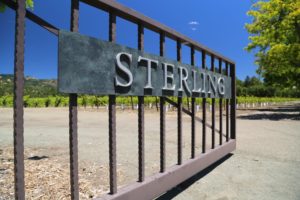
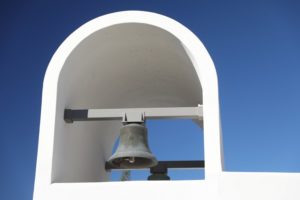
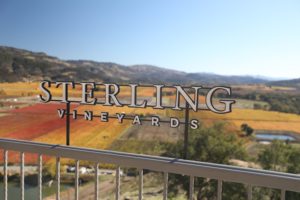 Sterling Vineyards is located in the northern part of Napa Valley; this property is well setup for tourism. Sterling has Napa’s only winery aerial tram system; the ride lasts a few minutes, whisking guests from the parking lot to the winery and visitor center located on top of a 300-foot wooded volcanic knoll that rises from the valley floor. The name Sterling refers to the unit of currency in the U.K., (the pound sterling) where its founder Peter Newton was born and it also describe something very good in character.
Sterling Vineyards is located in the northern part of Napa Valley; this property is well setup for tourism. Sterling has Napa’s only winery aerial tram system; the ride lasts a few minutes, whisking guests from the parking lot to the winery and visitor center located on top of a 300-foot wooded volcanic knoll that rises from the valley floor. The name Sterling refers to the unit of currency in the U.K., (the pound sterling) where its founder Peter Newton was born and it also describe something very good in character.
The hospitality spaces at Sterling Vineyards sustained significant damage in the Glass Fire in late 2020; after three years of being closed for renovations Sterling opened for tours and tasting experiences on October 29, 2023. It is remarkable the main buildings survived this fire as much of the surrounding hillsides and vegetation on their own property was burned. While closed, the visitor center was completely remodeled. This was the worst fire the immediate property has experienced since Sterling Vineyards was built on the knoll. However in July 1976 a localized three-acre fire burned underneath the tram at one point threatening the buildings on top of the hill.
Over several years following the Glass Fire, the iconic gondola system was completely updated. For reference, its previous overhaul was in early 2007. It now features larger gondola cars, seating 8 instead of 4 guests, each car has a mounted camera holder inside for taking selfies, a faster system and a slightly different route to the top. Depending on how fast the gondola system is operating, usually between 2.5 to 3 meters/second, the total round trip time will take anywhere from approximately 6 to 8 minutes. Each cabin is 16 feet tall and has a load weigh capacity of 1,500 pounds – so you don’t have to worry about the weight of all those cases of wine you will be taking with you down the mountain. Remarkably the same company that built the original gondola system (Doppelmayr) produced the upgraded new gondolas. The gondola cars are fully ADA compliant.
The winery was designed by Keith & Associates of Santa Rosa; the same firm that worked on projects at other wineries including Chappellet Winery, Heitz Cellars, Christian Brothers and Beaulieu Vineyards. Other input on the Sterling Vineyards design primarily came from Martin Waterfield, Dick Graff (one time owner of Chalone Vineyard and one of the founders of the American Institute of Wine & Food) and a young winemaker named Ric Forman. Tragically Dick died in a small plane crash near Salinas at age 60. It was Martin’s idea to install a tram to whisk visitors from the valley floor up to the top of the mountain.
In late 2008 the tram system was converted to solar power. The tram cars take a different route on the way back down. On a clear day, views from the top of the hill are spectacular. Billed as the only winery in the world with an aerial tram, it opened to the public at the end of July 1973; an unveiling for approximately 100 invited guests was held on Tuesday July 17th that year. Vintners who attended included Robert Mondavi, Don Chappellet and Brother Timothy.
Presently, this tram system holds 13 tram cars each of which is built with surrounding glass windows so one can see in all directions on the ride up and down. The total distance traveled round trip is approximately 2,800 feet. At its highest point tram cars are 105 feet above the ground. And note that when the temperature reaches around 100 degrees, Sterling will close the tram because of the high heat. And at that point, guests will be shuttled up and down to the hospitality center in vans. Although we have been here when the temperature was 104 degrees and the trams continued to run.
Three years after the winery opened for visitors, Sterling Vineyards made an important vineyard purchase in 1977, acquiring 320 acres on Diamond Mountain from rancher Eugene Hill. Prior to World War II Hill was managing about 40 acres of prune trees on site. After Sterling purchased the property, they named it Diamond Mountain Ranch; wines continue to be produced from this site including the Sterling Vineyards Reserve Cabernet Sauvignon. The elevation of the ranch runs from approximately 800 to 2,000 feet and includes some vines on slopes as high as 60% grade.
This ranch had originally been developed for grapes in the mid to late 1880s by a German couple, Peter and Louise Schmidt. Peter was an prominent architect in San Francisco and was responsible for a number of some of the cities’ finest buildings in the late 1800s. He was originally from Hagen, North Rhine-Westphalia Germany. Peter et ex (and wife) transferred 1/5 of their interest in what was their 365 acre property to their son, Richard Schmidt in early 1899 for $10. After his father died in 1901, Richard continued to oversee the property as an orchardist and winemaker. Three structures were built on site including a stone and wooden winery built in 1888 with a capacity of 60,000 gallons.
An article in The St. Helena Star dated May 29, 1891, describes his property as, “a splendid place” with 60 acres planted to vines and 40 acres to prunes, nuts and olives. With an abundance of natural water on the property including springs, Schmidt built an electric light house using a water motor to light up parts of the property every evening. For reference, Thomas Edison had invented the light bulb in 1879. The wine presses and other winemaking equipment were also run by the electricity created from the water motor.
Major fires burned through this part of Napa Valley and in neighboring Sonoma County in September 1909. A Napa Weekly Journal article dated September 17, 1909 describes Richard Schmidt having lost 50 tons of dried prunes stacked on his property due to the fire. And the same article mentions that Calistoga had emptied its male population as about 1,000 men were out fighting the fires. It was estimated that 50 square miles had burned in the region as part of what was described as the biggest fires in the history of the state, including blazes burning at the time in central and southern California. It seems like this part of Napa Valley can expect a major fire at least every 40 to 70 years which is part of larger firestorm events affecting much of the rest of the state. Reference the Handley Fire in 1964 and still fresh in residents’ minds, the Tubbs Fire and Glass fires of 2017 and 2020.
As of at least the mid 1980s the original winery was still standing and was being used for storage. Diamond Mountain Ranch is one of 6 distinctive vineyards that Sterling owns in either the Calistoga or Diamond Mountain sub appellations.
Also, in 1977 on October 29th then Prince Charles visited Sterling Vineyards for 45 minutes, enjoying a tour with several employees including Sir Peter Newton and winemaker Ric Forman. He and his entourage landed on the property by helicopter. While there, Charles tasted a 1973 Reserve Cabernet Sauvignon and a 1975 Pinot Chardonnay.
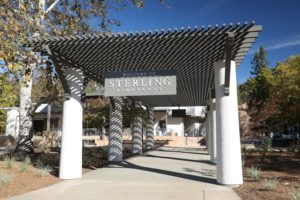
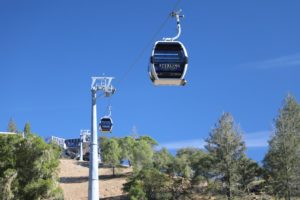
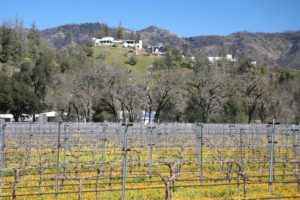 The property that would become Sterling Vineyards was acquired in 1967 by the late Peter Newton (died in 2008), a native of England who served in the British Army during World War II. He moved to San Francisco in 1950 where he worked as a journalist for the Financial Times. In 1951 he founded Sterling International, a paper company based in San Francisco whose business involved tissue paper but transitioned into manufacturing and trading of other paper products. It is interesting to note that Newton’s father Frank Newton was an early automobile racer and won the 1908 Montagu Cup at Brooklands motor circuit in the UK. The tie in here with Napa Valley is one of the founders of Brooklands was Lord John Montagu whose great grandson, Weston currently produces wines in Napa Valley under the labels Montagu and Silver Ghost. Frank Newton was a gold miner during the Alaska Klondike Gold Rush; perhaps he rubbed shoulders with Frank Manley, a prominent miner who was at the Klondike and later owned property in Rutherford on site of what is now Staglin Family Winery. Newton was also an engineer who designed the Trans-Andean Railway which was the highest railroad on the planet at that time.
The property that would become Sterling Vineyards was acquired in 1967 by the late Peter Newton (died in 2008), a native of England who served in the British Army during World War II. He moved to San Francisco in 1950 where he worked as a journalist for the Financial Times. In 1951 he founded Sterling International, a paper company based in San Francisco whose business involved tissue paper but transitioned into manufacturing and trading of other paper products. It is interesting to note that Newton’s father Frank Newton was an early automobile racer and won the 1908 Montagu Cup at Brooklands motor circuit in the UK. The tie in here with Napa Valley is one of the founders of Brooklands was Lord John Montagu whose great grandson, Weston currently produces wines in Napa Valley under the labels Montagu and Silver Ghost. Frank Newton was a gold miner during the Alaska Klondike Gold Rush; perhaps he rubbed shoulders with Frank Manley, a prominent miner who was at the Klondike and later owned property in Rutherford on site of what is now Staglin Family Winery. Newton was also an engineer who designed the Trans-Andean Railway which was the highest railroad on the planet at that time.
Peter’s brother, Doctor Kenneth Newton wrote the Two Pound Tram, (under the pen name William Newton) a very successful selling book. This is a delightful read; similar to the tragedy film genre which features loss, this book leaves one feeling somewhat sad. Peter’s son is Nigel Newton, the founder of Bloomsbury Publishing Plc – the publisher of the Harry Potter series (whose young daughter Alice helped ‘discover’ J.K. Rowling after reading one of her early drafts that her father had brought home).
Newton’s other partner in Sterling International was London born Michael Stone (died in 1995), a former Navy fighter pilot for the British Royal Navy who later became president of Sterling Vineyards and eventually served as Secretary of the Army under President George Bush. He oversaw the operations at Sterling Vineyards from 1964 until 1982.
Within a period of only several years starting in 1964, Newton purchased several properties in the north part of Napa Valley. By 1970 according to the April 25, 1970 issue of The Napa Valley Register, Sterling Vineyards already had 350 acres under production. Newton’s initial intent was to grow grapes and sell the fruit to area producers. One of the properties was purchased from long time residents, the Rockstroh family who bonded a winery here in 1933; this was the first winery on what is now the Sterling Vineyards winery property. When Charles W. Rockstroh Jr. died in 1967, 70 acres came up for sale.
The first mention of Peter Newton in any of the local newspapers was in a large ‘one year update and thank you’ placement in the October 27, 1966 issue of The St. Helena Star. Newton was one of many individuals that Schramsberg highlighted as being an early supporter of Schramsberg Vineyards.
According to an article in The St. Helena Star dated September 19, 1969, “Sterling Vineyards last season crushed 300 tons of grapes”; these grapes were processed at Robert Mondavi Winery. Winemaker Ric Forman also refers to the 1968 Sterling harvest in his interview in 1999 for the Oral History Office at The Bancroft Library at UC Berkeley.
This first vintage must have never been released as the first commercial vintage of Sterling Vineyards was in 1969. Ric’s interview with UC Berkely and the same article in the St. Helena Star both mention that the 1968 Sterling wines were temporarily stored at Schramsberg Vineyards until the Sterling caves were completed. Sterling’s hospitality center and winery on top of the hill were not yet completed at that time.
By the late 1960s, Sterling had already developed 100 new acres of vines with trellising; growing grapes on ‘wires’ was considered unique in those days in Napa Valley; today most of the grapes in Napa Valley are trellised. And furthermore in conjunction with their pruning, the vines were already setup to be mechanically harvested.
Ric Forman was hired as Sterling’s founding winemaker at age 25 in 1969; despite only in his mid 20s at the time, he had already worked the 1967 harvest at Stony Hill Vineyard and the 1968 harvest at Robert Mondavis Winery. He was very much influenced by winemaking occurring in Bordeaux and Burgundy.
He used new French oak barrels including doing fermentation in the barrel for Chardonnay and how to do this properly so the wine did not end up tasting woodsy. This included letting the wine sit on the lees – rather than quickly filtering as was the practice in those days. He also introduced a Bordeaux system of racking and fining in barrels, racking out of the head of the barrel using air pressure. And he did not put his Chardonnays through malolactic fermentation.
While the focus of Sterling Vineyards was on Chardonnay, Merlot and Cabernet Sauvignon, Forman also produced wine from other varieties in the early years including Chenin Blanc and Pinot Noir.
Ric has built a very successful career in Napa Valley and currently operates Forman Vineyard with his son Tobias. He has been an integral component in the Napa Valley wine scene for part of 7 decades and counting; every time we see him, he seems ageless. He has been a mentor, a connector and an influencer of the careers of numerous winemakers and others in the wine industry. One of his contributions included introducing slightly sweet Chardonnay to large numbers of consumers when he told vintner Jess Jackson to blend some sweet Chardonnay into a dry Chardonnay. The Kendal Jackson’s Chardonnay became the best selling Chardonnay in the U.S.
The number of wineries he has worked for or consulted for throughout his career is truly impressive. Sloan Upton, one of the developers and owners of Three Palms Vineyard (made famous by Duckhorn for their Merlot) was Sterling Vineyards foreman at the time. Incidentally, Upton was a cousin of Newton’s first wife Anne.
Other winemakers who have worked at Sterling Vineyards before include Philip Togni, Cary Gott, Nils Venge, Theo Rosenbrand, Bill Dyer, Rob Hunter and perhaps the first woman on their winemaking team, Annette Hoff.
Ground was broken on the winery in 1969. Newton built the winery in a style that was influenced by Greek Mediterranean whitewashed architecture, specifically from the island of Mykonos. This influence is pretty obvious when one sees the winery. The first harvest in what was their recently completed winery, was in 1972 and was 550 tons. An article in The St. Helena Star dated November 1, 1973 describes some of the oak vessels used by the winery that year were made from Yugoslavian oak, crafted in Italy by Spanish coopers and then sent to the U.S.
Sterling Vineyards has been sold several times including in 1977 to the Coca-Cola Company, in 1983 to Seagram and in 2001 to Diageo. Interestingly during the Seagram ownership, Sterling produced sparkling wine in conjunction with GH Mumm in Reims (Champagne, France); according to an article in The Napa Valley Register dated March 28, 1984, Sterling Vineyards was a temporary home for Mumm until Mumm’s winery was built and opened in 1986 in Rutherford. Currently Sterling is owned by Melbourne, Australia based Treasury Wine Estates.
The first set of caves at Sterling Vineyards were finished in the late 1980s. A cave expansion was worked on in 1993 by Napa Valley’s cave drilling pioneer, Alf Burtleson. His work and story was told in the book, Into the Earth: A Wine Cave Renaissance written and photographed by Daniel D’Agostini with Molly Chappellet.
Peter loved designing elegant formal gardens; perhaps his interest in gardening was from his mother Margaret who was an avid gardener. Newton Vineyards, also founded by Newton is located in the Mayacamas mountains west of St. Helena and before burning in the Glass Fire of 2020, featured gorgeous well-manicured gardens. And he helped with the redesign of Grace Episcopal Church in St. Helena and their accompanying gardens.
Sterling’s long driveway passes underneath moss covered trees, eventually reaching several wrap around parking lots located at the base of the gondola system. The gondola runs continuously during their normal business hours so there is no need to purchase advance tickets, however, note that on busy weekends, its best to get here early as there can be a fairly long line later in the day. Some 150,000 visitors come through their doors each year.
Sterling Vineyards is one of Napa Valley’s larger landowners with some 1,200 acres of vines farmed under their ownership. The winery owns 6 estate properties, all within either Diamond Mountain or Calistoga appellations. And the work with select growers up and down the valley. As a result, they make a very large selection of wines covering a wide range of pricing. Some of their most limited production wines are bottled under their Reserve Collection or their Napa Valley vineyard designates of Cabernet Sauvignon. And these are premium vineyards; as of our latest update to this review some of the vineyards they work with are Yates Family on Mt. Veeder and Sleeping Lady in Yountville. Some of their wines can only be purchased at the winery.
The wines have won awards and earned medals over the years. One such tasting worth mentioning occurred in Ottawa in 1981. This blind tasting was organized by The Society of American Wines overseen by professional wine judges. The competition included seven bottles of Napa Valley Cabernet Sauvignon from iconic producers, with vintages from the early to mid 1970s against five Bordeaux first growth and one second growth bottlings from the 1970 vintage. The 1974 Sterling Vineyards Reserve Cabernet was awarded the number one wine from this tasting.
Sterling Vineyards won gold medals at three competitive tastings in 1988: the Expo du Vin, the El Dorado West Coast and the California State Fair.
Hospitality
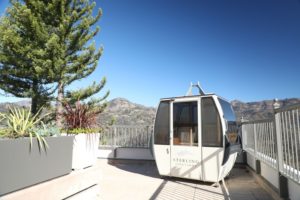
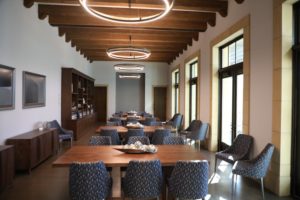
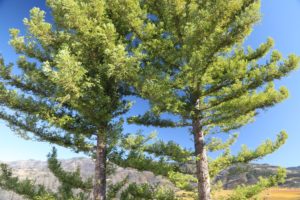 Several tasting options available for purchase at the ticket counter and all include a gondola ride. Don’t be fooled into looking for seat belts in the gondola if one of the attendants quickly asks you to, “please buckle your seatbelt”. The most popular offer, the Sip & Stroll is a self-guided tour following signs and educational videos on strategically placed monitors explaining various components of wine making and Sterling’s history. This was Napa Valley’s first self-conducted winery tour when the hospitality center opened in 1973. But this is not the only experienced offered; guests can choose a seated wine tasting in their Hilltop Tasting Room or a seated tasting on the Southview Terrace.
Several tasting options available for purchase at the ticket counter and all include a gondola ride. Don’t be fooled into looking for seat belts in the gondola if one of the attendants quickly asks you to, “please buckle your seatbelt”. The most popular offer, the Sip & Stroll is a self-guided tour following signs and educational videos on strategically placed monitors explaining various components of wine making and Sterling’s history. This was Napa Valley’s first self-conducted winery tour when the hospitality center opened in 1973. But this is not the only experienced offered; guests can choose a seated wine tasting in their Hilltop Tasting Room or a seated tasting on the Southview Terrace.
Weather permitting guests will be greeted by a small wine bar down the ramp after exiting the gondola, where guests will sample one of their white wines. You will be given a glass to take with you to the other tasting stations. After your tastings, the glass is yours to keep. Most people probably do keep the glasses but you are not obligated to do so. At each of these ‘mini bars’ someone will be pouring and providing verbal information about each of the wines being served.
Continuing your tour, be sure to walk outside on the catwalk overlooking their large steel tanks – additional educational information is available here about the process of fermentation. A walkway leads from their tank and barrel rooms out to the Southview Terrace. One side of the hallway is hand-painted with a mural of Sterling Vineyards by artist Dusty Kramer. He has created several murals in Napa Valley including the Greetings from Napa mural on Jefferson Street in Napa and restored the Drink Coca Cola mural at the iconic Oakville Grocery.
The most common question the host at the Southview Terrace tasting station probably has to answer is, “is that a castle over there?”. Yes, it most definitely is; it is the impressive Italian styled “Castello di Amorosa” built by Dario Sattui, also the founder of the wildly popular V. Sattui Winery. The castle is easily seen to the west from the Southview Terrace.
The large tank room contains an assortment of various shapes and sized tanks. During certain times of the year, the smells in here are wonderful and linger all throughout the main building. If the weather is bad, a wine station will be located in a corner of this room. Visitors will pass through this room on their way to the well-loved Southview Terrace and bell tower.
The 8 bells ring every fifteen minutes. Five of the bells were cast in 1951 and three in 1971 (one new and two recast) by the world’s largest bell foundry, John Taylor & Co whose origins date back to 1784. Five of these bells hung at St Dunstan-in-the-East Cathedral in London post World War II. This cathedral was severely damaged by a bomb during the blitz in early 1941 during World War II, leaving the tower, the steeple and a few walls standing. The 8 bells hanging at that time were all damaged during the bombing and all dated from early to the mid 1700s. An article dated March 20, 1941 in The Guardian quotes the rector as saying, “We are now a dangerous structure until repairs can be carried through. The worst bomb fell close to the plague pit and wrecked the Old Rectory. But the Catalpa tree stands, the ‘big tree’ noted by Sir Walter Raleigh when he returned from the founding of Virginia”.
After the bells were cast in 1951 they were installed in the tower but when they were all rung simultaneously, because there was no longer the supporting structure of the church, the tower would oscillate greatly. The last time these bells were rung at the church was November 26, 1970. The space where they used to hang remains empty.
The grounds of St Dunstan-in-the-East Cathedral were converted into a public garden space in 1967. The garden and remnants of the church are completely surrounded by modern buildings; time spent inside this space is calming. Bring a good book and sit down on one of the benches for a while. These former church bells were sold back to John Taylor & Co and then somehow found their way to hang at Sterling in 1973. The St. Dunstan room, used for hospitality at the winery is named in homage to this former cathedral.
On a warm day the Southview Terrace is a fantastic place to soak up wine, the sun and people watch behind sunglasses. From here, there are panoramic vistas of Napa Valley to the south and of the rugged wooded hills to the northeast. This is definitely one of Napa Valley’s most romantic spots and couples can often be seen flirtatiously cozying up to each other next to the railing while other well-appointed tourists take selfies for their Instagram and Tik Tok accounts.
Two prominent Italian cypress trees used to grow on the south side of the appropriately named Southview Terrace but unfortunately both were removed after the Glass Fire. Instead two redwood trees now grow next to each other on the east side of the terrace. We originally gave the Italian cypress trees names (Easton & Weston) but now that they are gone, we have transferred similar names to the two redwood trees. As you face them from the terrace, the one on the left is called Northon and the one on the right is called Southton in reference to their geographic locations.The Hilltop Tasting Room located next to the sizable gift shop sits on the highest point of the property. Seated tastings are hosted both indoor and on the north facing outdoor terrace. Trees surround parts of the terrace and when the wind blows, it’s hard to determine whether you are actually in Napa Valley or maybe in California’s Sierra Nevada mountains somewhere.
And due to the nature of Sterling Vineyards being such a prominent winery, the site has been used to host numerous events or short courses over the years including special food, wine, music, film and or other niche gatherings. Martha Stewart even taught a short cooking class at the winery in October 1988.
One event which we would have enjoyed attending was a tribute dinner in 1984 to Emile Peynaud, the French oenologist. In addition to Peynaud attending, other prominent vintners included Ernest Gallo, Fred Franzia, Dick Maher, Dick Peterson, Peter Mondavi, Joe Heitz and Hanz Kornell, among others. Sterling’s wine library was renamed at this event to: La Vinotheque Professeur Emile Peynaud.
Sterling also has a long standing of supporting fine art. Several artists who have showcased their work include Stephen Paines Hall, an exhibition of primarily winery posters, Ellen Gunn, silk paintings, Sara Barnes’ original paintings and Phoebe Ellsworth.
And an artist in residence in the mid 1980s, Dr. Sondra Barrett presented microscopic images of wines including one which first caught the attention of Sterling Vineyards, her microscopic photograph of the 1978 Sterling Vineyards Merlot. She began taking photographs of biological organisms under the microscope in 1977 and in 1983 began to focus more on micro-wine photography. Her photograph of a 1978 bottle of Sterling Vineyards Merlot led to her becoming an artist in residence in the mid 1980s at Sterling Vineyards. Her photography exhibit at Sterling Vineyards in 1984 was titled, A New Look at Wine. She proposed calling this type of photography Molecular Expressionist Art.
In 1984 Sterling Vineyards hosted a VIP event for the delegates of the National Democratic Convention.
For about 7 years in the 1990s, Sterling Vineyards operated the Sterling Vineyards School of Service and Hospitality program. With the blessing of Sterling Vineyards, this program was launched by Master Sommelier Evan Goldstein who estimates the program educated over fourteen thousand people both domestically and internationally. The programs were setup as one, three or five-day courses covering both rules of service as well as other wine information including production.
In 1992 Sterling Vineyards launched a Plant a Tree program; two years later it was estimated that as a result of this program, approximately 9,000 trees had been planted in city parks around the country.
We used to enjoy hanging out at the low grape stomping that Sterling Vineyards offered for visitors for several years towards the back of one of their parking lots.
Select Wines
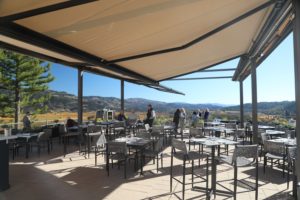
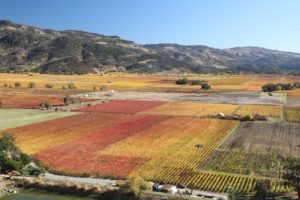 Whites
Whites
The 2019 Sterling Vineyards Unoaked Chardonnay Carneros, Napa Valley is pale gold in color; the bouquet offers fragrant aromas of pear, pineapple, honeycomb, honeysuckle, citrus blossom and a light lemon zest. The palate is crisp with its bright acidity offsetting some of the sweetness (residual sugar). This wine offers flavors of melon, pineapple, pear, passion fruit and Granny Smith apples. The mouth feel showcases a rounded and supple texture with a mouthwatering finish. Based on its palate alone, we would like to think we could identify this in a blind tasting of other Napa Valley produced Chardonnays. This is not a complex bottling of this variety, and its not meant to be.
The 2020 Sterling Vineyards Pinot Gris, Carneros Napa Valley is pale yellow in the glass; the bouquet immediately shows citrusy characteristics including citrus blossom and a citrus peel zest. But there is a bit more happening here with aromas of jasmine, green apple, white peach and some tropical notes including pineapple guava, kiwi, not fully ripe pineapple and passion fruit. Off dry on the palate, this wine offers flavors of pear, white peach, pineapple guava and a light but persistent herbal note. Shows medium acidity. This wine was harvested in early August, before the worst of the fires in the region.
Reds
The 2021 Sterling Vineyards Heritage Collection Merlot Napa Valley is a blend of 91% Merlot, 8% Petite Sirah and 1% Cabernet Sauvignon. This wine is deep ruby in color; the bouquet offers aromas of plum, bramble, raspberries, blood orange and a distinctive note of mocha and vanilla. Darkly fruited and savory across the palate this wine reveals flavors of blackberry, plum, crushed black peppercorn and dried herbs. The acidity is bright and lingers on the finish with a light tartness. The tannins are lightly gripping, grainy and linger more on the front of the palate than on the back. They persist for some time with a drying character and accompanying dark spices including toasted oak. We would like to pair this wine with a home-made ravioli, perhaps something from Canevari’s Italian Delicatessen in Santa Rosa, CA. For historical reference, Sterling Vineyards was the first winery in Napa Valley to bottle a vintage-dated Merlot.
The 2018 Sterling Vineyards Reserve Malbec St. Helena, Napa Valley is deep ruby and opaque in the glass with an amaranthine rim; the nose is darkly fruited including aromas of blackberry jam, boysenberry, Pakistani mulberry at the peak of its ripeness, Santa Rosa plum, a hint of toast, dark chocolate, hazelnut, roasted coffee beans and some floral notes including of violets. Beautiful aromatics. Bright with crunchy acidity, the palate delivers flavors of plum, black currants and red cherry accompanied by a savory light woodsy spice on the finish. The tannins are grainy with a moderate grip on the juicy and mouth watering finish. This wine was aged for 16 months in a combination of French (71%), American (24%), and Hungarian (5%) oak, of which 62% pf the barrels were new.
One of their more popular white wines by those who have a sweet tooth is the Malvasia Blanca. This is an ancient variety that is not usually grown in Napa Valley. As of our latest update to this review, the grapes for this wine come from Madera located in California’s central valley. Interestingly this variety is also grown in Madeira, (islands that are a part of Portugal, located West of Morocco). We have tried several vintages over the years; it is light bodied, sweet without too much acid, and fruity; it pairs well with spicy Asian food.
On busy weekends, often the last allowed entry for visitors is at 415pm. Refreshingly, Sterling Vineyards has blanketed much of their parking lot with complimentary Wi-Fi, appropriately called ‘Wine Fi”!
Total production is around 400,000 cases a year. The wines are well distributed nationally. For more information, to schedule an appointment or to join their wine club, visit: www.sterlingvineyards.com
Treasury Wine Estates
Accordingly to a list published in 2024 by the Wine International Association, Treasury Wine Estates is currently the 3rd largest wine company on the planet. Treasury was formerly the wine division of the Australian based Foster’s Group and was founded in 2011, although its roots can be traced back to the mid 1990s when Foster’s began to build out their wine division.
Treasury Wine Estates owns or manages some 22,000+ acres of vineyards in Australia and New Zealand and throughout Treasury Americas, a division of Treasury Wine Estates, nearly 10,000 acres of vineyards in the USA, primarily in Napa Valley, Sonoma County and California’s central coast.
As of our latest update to this review they are the largest controlling entity of vineyards in Napa Valley primarily through leased land. They own several of Napa Valley’s most iconic, historical and storied producers including the following six wineries: Beaulieu Vineyard, Beringer Vineyards, Etude, Frank Family, Stags’ Leap Winery and Sterling. And of the other brands under their ownership, Penfolds in the Barossa Valley, Australia is arguably the most famous.
Headquartered in Melbourne, Australia the company also maintains regional offices in Napa (Treasury Americas), United Kingdom (Treasury Europe, Middle East & Africa), Singapore (South East Asia) and China (North Asia). In 2019 the company moved its headquarters to one of the uppermost floors in one of Melbourne’s most iconic buildings, the T&G Building located on Collins Street a few minutes’ walk from the Flinders Street Railway Station.
The T&G building, named after the T&G Mutual Life Assurance Society was built in 1928 and features a gorgeous atrium like setting and high-end retail shops on the ground floor as well as 10 floors of office space. This was one of Melbourne’s first large scale office buildings. Despite being one of Melbourne’s prominent and historical buildings, Treasury Wine Estates keeps a very low profile and has no signage.
In 2022 Treasury unveiled a significant winery located in the Barossa Valley with an annual capacity of producing nearly 26.5 million gallons of wine. The property and winery are located next to Wolf Blass Visitor Center in Nuriootpa (Wolf Blass is also owned by Treasury).
In 2023 Treasury purchased Paso Robles based Dao Vineyards for nearly $1 billion USD.
Solar power. Also in 2023, it was announced that every Treasury Americas winery will generate more than 50% of its electrical needs from on-site solar power. Critical to obtaining this goal, approximately 13,000 solar panels were installed as part of more than 29,000 solar modules installed at its properties across the globe. By 2024, Treasury Americas was 100% powered by renewal energy.
Gondola
Winemaking
Views
Hilltop Tasting Room
Gift Shop







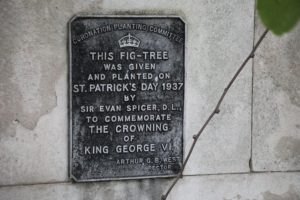

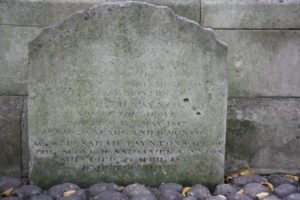
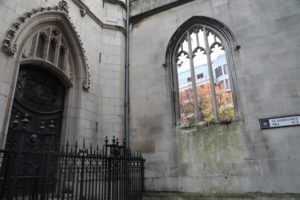

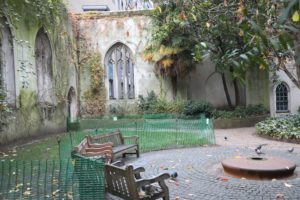

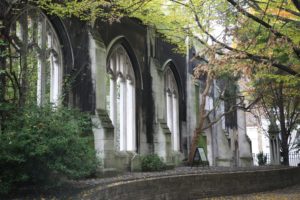
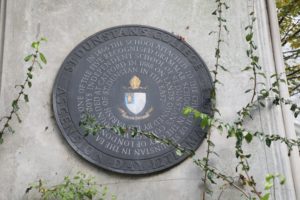
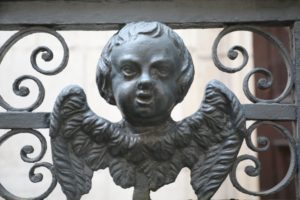
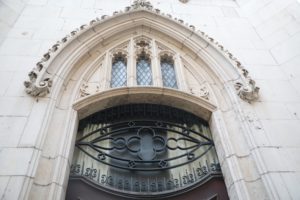

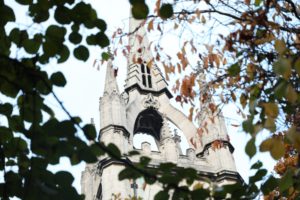
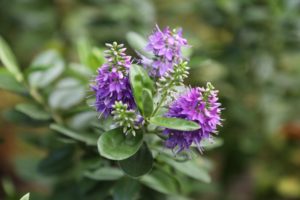
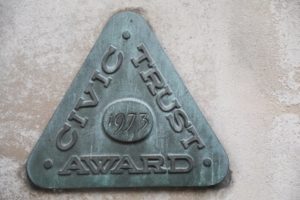
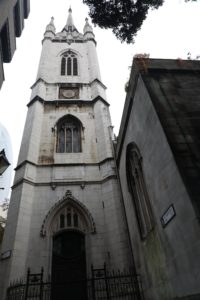
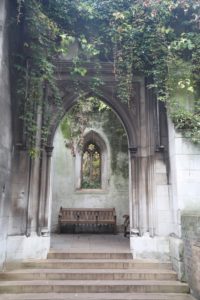
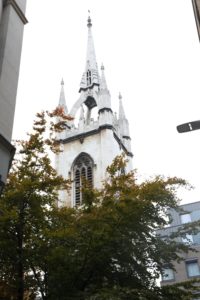

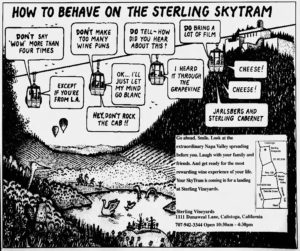

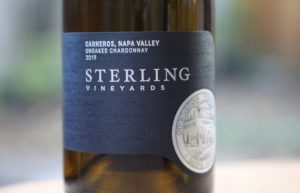
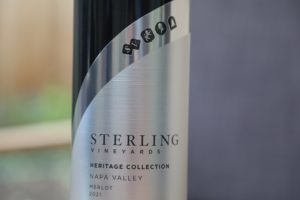
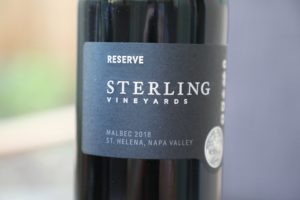
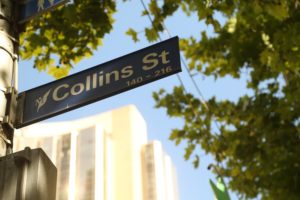
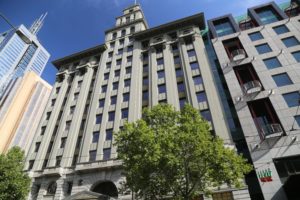
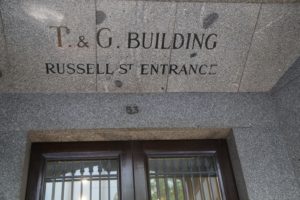
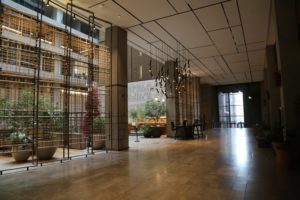
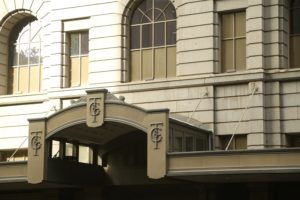
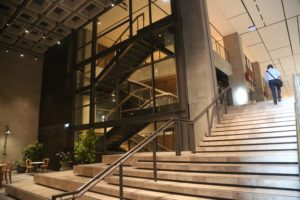
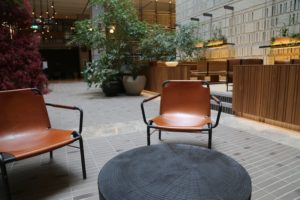
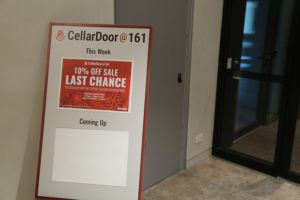
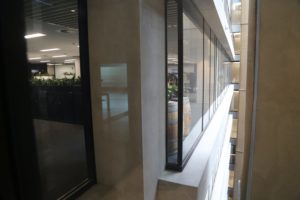
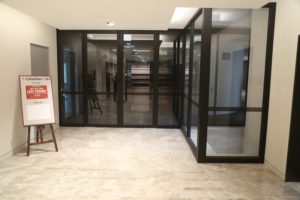
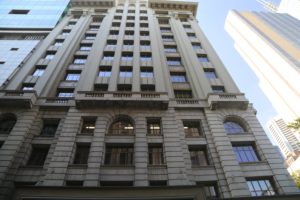
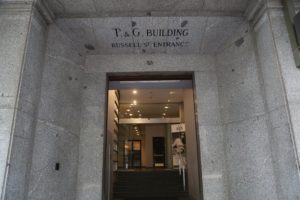

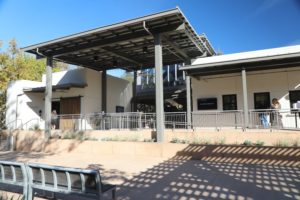
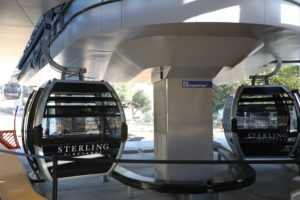
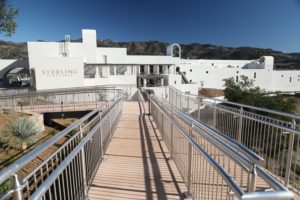
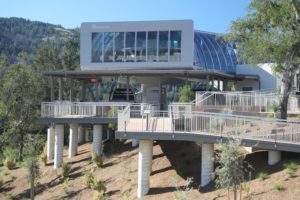
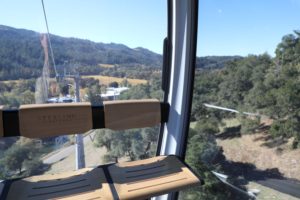
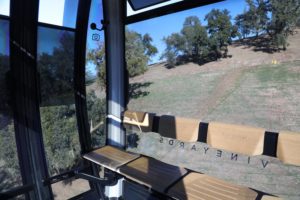
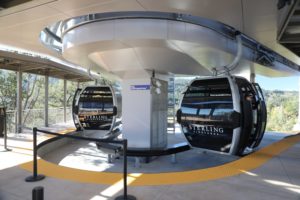
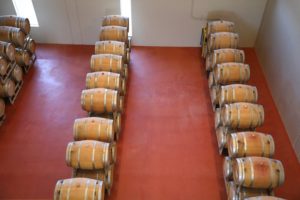
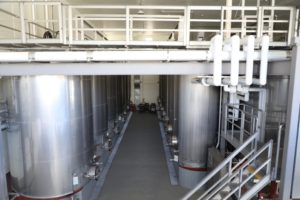
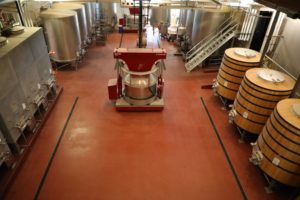
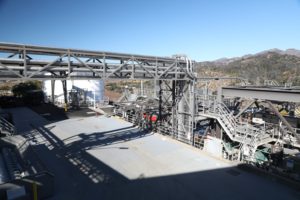
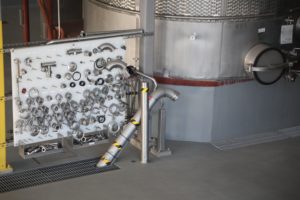
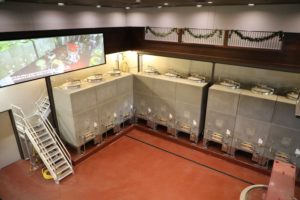
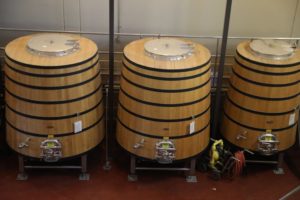
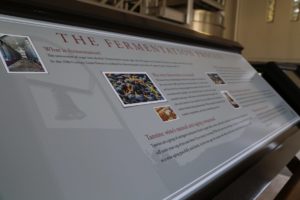
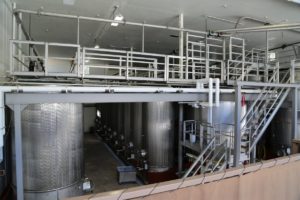
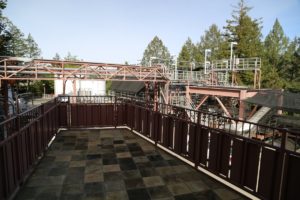
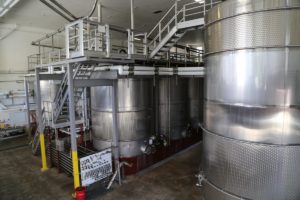
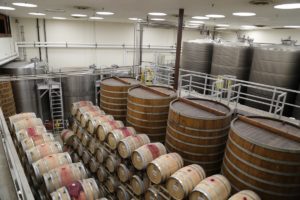


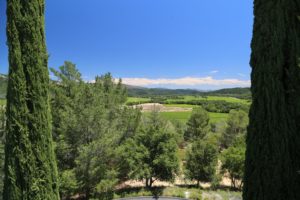
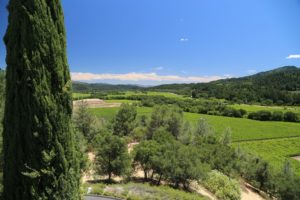
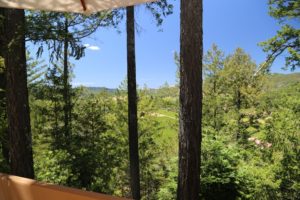
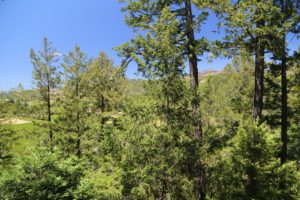
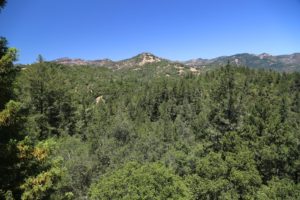
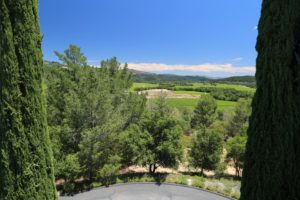
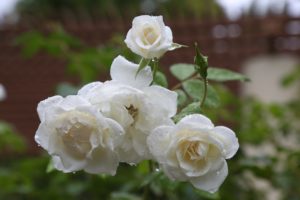
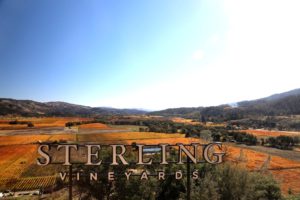
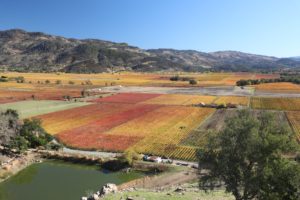
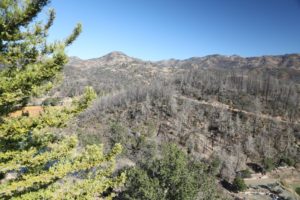
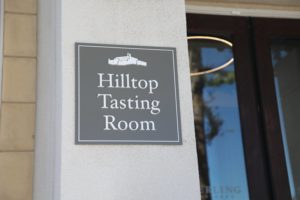
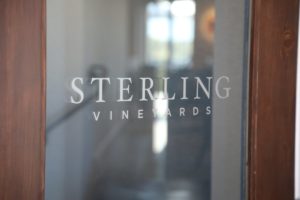
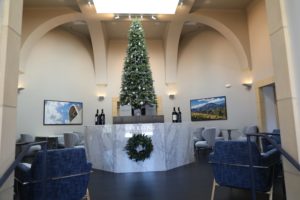
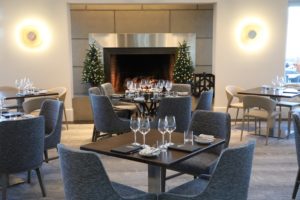
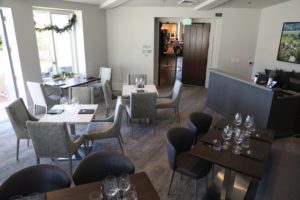
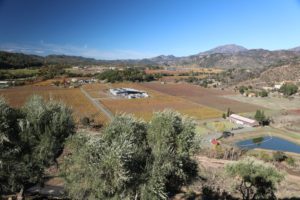
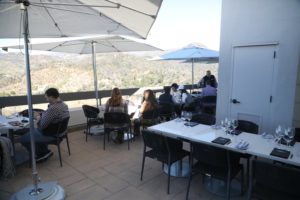
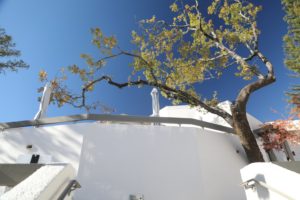
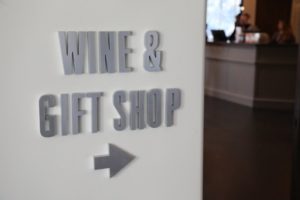
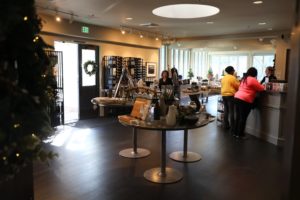
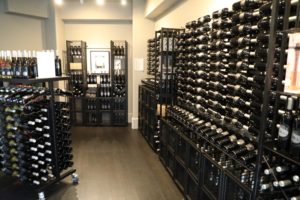
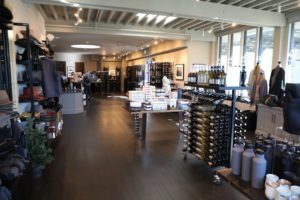
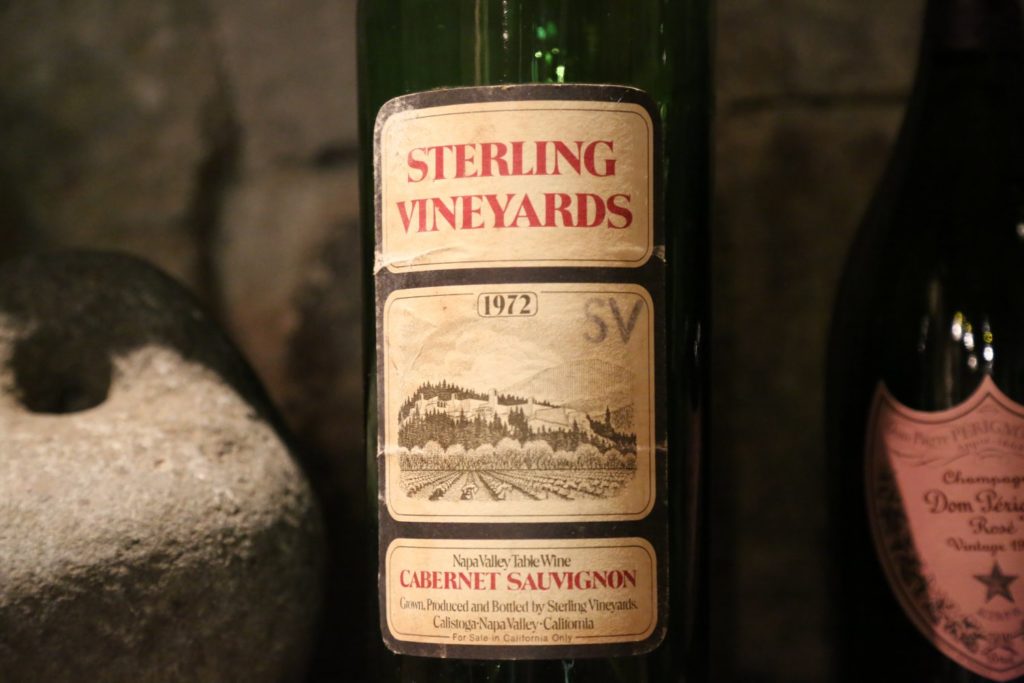
I know they were family owned at one time, but Diageo own’s them for at least 7 or 8 years. Should have that in your notes. Perhaps the family still runs the day to day…
Thanks Markur – currently, Sterling Vineyards is owned by Treasury Wine Estates.
Who was the architect? I remember he was someone very famous.
Sharran – from what I could find, the winery was designed by Keith & Associate with input, primarily from Martin Waterfield but also vinter Dick Graff (died in plane crash) and winemaker at that time Ric Forman. Hope this helps. I need to interview Ric at some point 🙂